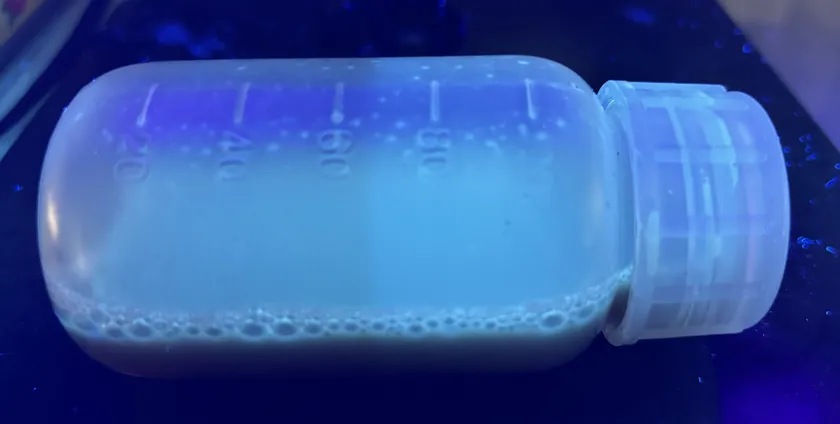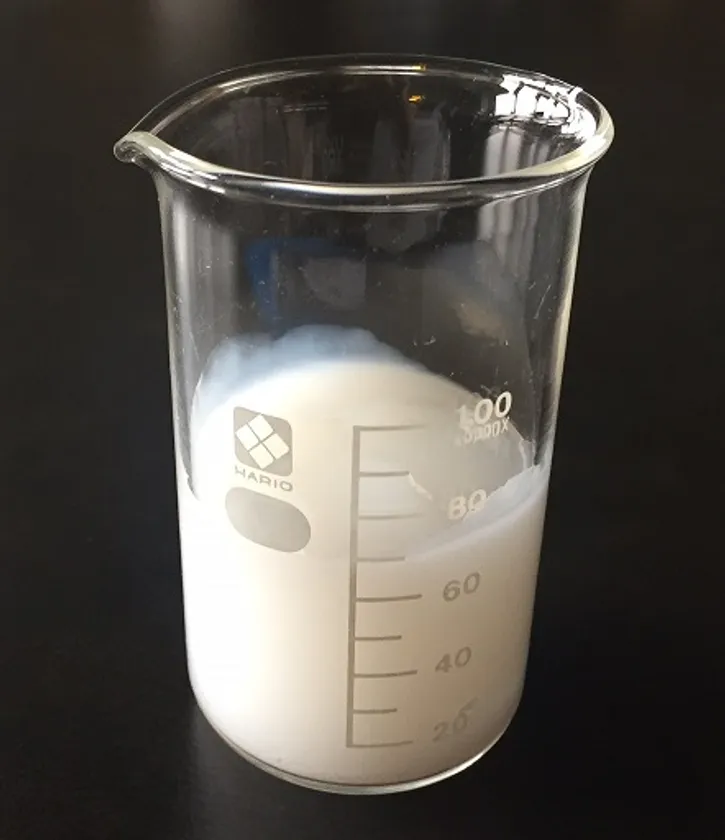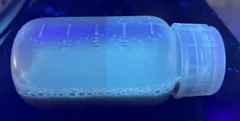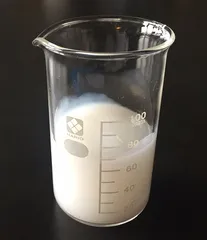Green Science Alliance Synthesizes Natural and Sustainable Quantum Dots from Cellulose Nanofibers Synthesizing 100% natural, sustainable, environmentally friendly quantum dots
GSアライアンス株式会社
Green Science Alliance Corporation (President: Ryohei Mori, Head Office: Kawanishi City, Hyogo Prefecture) has synthesized quantum dots from cellulose nanofibers and lignocellulose nanofibers made by the company.

Quantum dots synthesized from nanofibered biomass materials are 100% natural components.
About Quantum Dots
Quantum Dots (Quantum Dots) are cutting-edge materials with nanoscale ultrafine structures that have optical properties that obey the laws of quantum chemistry and quantum mechanics, and were the subject of the 2023 Nobel Prize in Chemistry. Quantum dots are extremely small structures, typically 0.5-9 nm in diameter, with tens to thousands of atoms and molecules per dot, and are also called artificial atoms or artificial molecules. When the material of quantum dots is a semiconductor, it is possible to adjust the band gap depending on the size of the nanocrystal, and thus they have characteristic luminescence properties that depend on the particle size. Therefore, the emission wavelength can be tuned by changing the particle size, and compared to solid-state phosphors, quantum dots have a narrower spectral half-width and higher quantum efficiency, and can also absorb a wide range of wavelengths.
■Various Expected Applications
Quantum dots are expected to be used in the following applications because of their bright and vivid colors, wide range of wavelengths, high efficiency, long life, and high attenuation coefficient.
1. solar cells
2. display
3. bio-imaging, biomarker, medical imaging devices (cancer cell imaging, protein analysis, cell tracking, etc.)
4. quantum computers
5. security tags, security inks, anti-counterfeiting
6. quantum dot laser
7. transistor
Photonic crystal
9. LED
10. high-density solid-state memory
11. thermoelectric material
12. artificial photosynthesis
About GS Alliance Inc.
GS Alliance Inc. has synthesized and sold various types of quantum dots and quantum dot composite materials. In recent years, GS Alliance Inc. has been particularly focusing on the synthesis of carbon quantum dots made from organic, biomass materials and biomass waste, rather than inorganic semiconductors. Since they do not use toxic inorganic materials such as cadmium and lead, and are made from organic, natural materials and, in some cases, biomass wastes, they are not toxic and can be inexpensive.
Dr. Ryohei Mori (Engineering) of GS Alliance Inc. has created cellulose nanofibers and lignocellulose nanofibers from cellulose and waste wood, which were then used as raw materials to synthesize carbon-based quantum dots. Although it is known that quantum dots can be synthesized from organic materials, there are few examples of private companies in the world synthesizing quantum dots from nanofibers. The advantage of nanofibers over cellulose as a raw material is that quantum dots can be synthesized more efficiently.
Under the recent circumstances where climate change, global warming, and food supply issues are becoming more serious due to the population explosion, the company is considering applying quantum dots derived from cellulose nanofibers and lignocellulose nanofibers made from waste wood to agriculture in particular.
Relying on raw materials such as cellulose, waste wood, and biomass wastes, the company plans to investigate the possibility of applying them to agricultural chemicals, which may have antimicrobial properties, in some cases. Dr. Ryohei Mori (Dr. Eng.) has already developed a quantum dot fertilizer, but the quantum dots derived from cellulose nanofibers developed this time could also be used as a fertilizer by modifying or adding some raw materials, and we will apply them to quantum dot fertilizers as well. There are also research reports that suggest that carbon quantum dots may promote photosynthesis in plants, and we plan to focus on agricultural applications in particular, as in these examples.
We plan to focus on the application of carbon quantum dots to agriculture in particular, as shown in these examples. These are sustainable, 100% natural, and environmentally friendly quantum dots that meet the Sustainable Development Goals (SDGs).

Cellulose nanofiber used as raw material
Company Profile
Company name: GS Alliance Corporation (Fuji Pigment Co., Ltd. Group)
Representative: Dr. Ryohei Mori, President (Engineering)
Head office: 2-22-11 Kohana, Kawanishi, Hyogo, 666-0015, Japan
Business description: Carbon neutral, decarbonization, environment to tackle SDGs issues,
Research and development of cutting-edge technologies in the environmental and energy fields that address carbon neutrality, decarbonization, and SDGs issues.
(United Nations Startup Enterprise Support Program
UNOPS GIC KOBE in 2020)
- Category:
- Technology & Development


